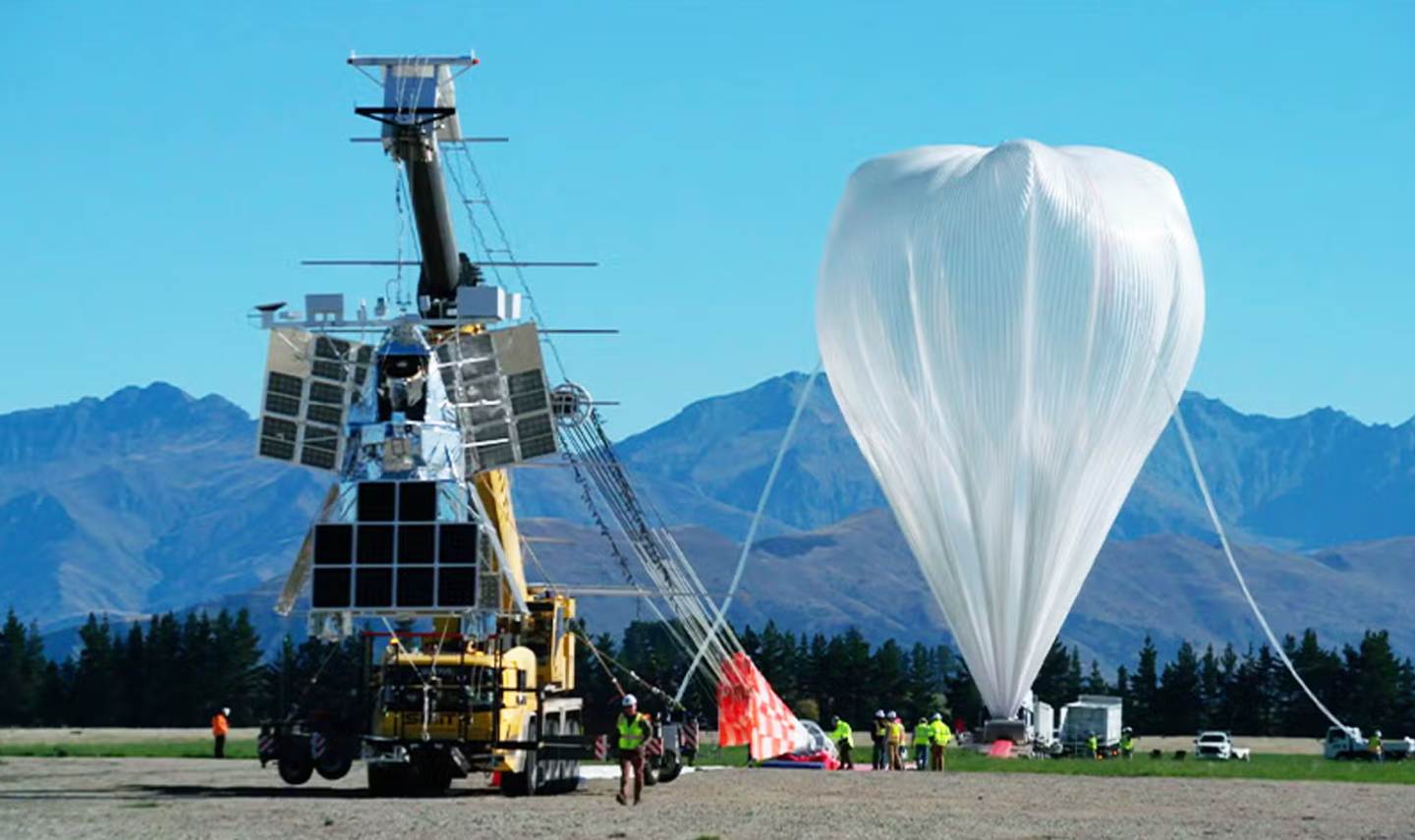Balloon telescope sheds new light on pulsars and black holes
A balloon-borne telescope has revealed new details about the Crab pulsar and a nearby black hole by measuring the polarization of hard X-rays.

 Edited By: Joshua Shavit
Edited By: Joshua Shavit

The scientists pointed a balloon-borne telescope called XL-Calibur at a black hole. (CREDIT: WashU)
Long before rockets and satellites reached space, the Crab Nebula stood out as a steady beacon of high-energy light. At its center sits a dense, rapidly spinning neutron star that turns every 33.8 milliseconds. That spin feeds a constant storm of charged particles, which glow in X-rays as they sweep through a cloud of energized gas.
For decades, astronomers have relied on imaging, timing and spectroscopy to study this object’s structure, from its polar jets to its twisted magnetic torus. Now a new tool is giving them another view of this famous remnant and a nearby black hole, revealing clues about how extreme objects transform gravity and rotation into enormous power.
Looking at Light in a New Way
The XL-Calibur mission is a balloon-borne X-ray polarimeter designed to measure the direction of electromagnetic field vibrations. These subtle vibrations give hints about where high-energy particles travel and how magnetic fields shape their paths. Earlier observations from NASA’s IXPE satellite captured these signals in softer energies. XL-Calibur pushes into the harder band between 19 and 64 keV, where electrons in the Crab’s inner nebula shine most brightly.
The instrument is built on a 12 meter truss topped by a mirror that focuses incoming X-rays toward a beryllium scatterer surrounded by sensitive detectors. The design takes advantage of the fact that polarized X-rays prefer to scatter at right angles to their electric field. By tracking this pattern as the detector slowly rotates, scientists can determine how strongly the light is polarized and in which direction it points across the sky.
A Balloon Flight Across the Arctic Sky
XL-Calibur lifted off from the Esrange Space Center in northern Sweden on July 9, 2024, riding a huge helium balloon that reached almost 40 kilometers above Earth. The thin air at this altitude reduced background noise and gave the telescope a clear view of the Crab and the black hole system Cygnus X-1. The flight drifted west at nearly the same latitude for several days, finally touching down in Nunavut, Canada.
The telescope locked onto the Crab on July 11, 12 and 13, alternating 25 minute on-source observations with short background measurements. Each X-ray event was time-stamped to microsecond accuracy and tagged with its exact position in the pulsar’s rotation. Although heat problems caused GPS interruptions on two nights, more than half the data remained stable enough for detailed timing studies.
What the Telescope Found in the Crab’s Inner Region
After cleaning and sorting the data, the team analyzed more than 56,000 Crab events. They measured a strong polarization degree of about 25 percent and a polarization angle of about 130 degrees across the full pulse cycle. The glow from the nebula outside the pulses was equally polarized. These results match earlier evidence that the hard X-rays come from electrons trapped close to the center of the pulsar wind nebula, where the magnetic field forms a tight toroidal ring.
The main pulse, called P1, showed hints of stronger polarization, but uncertainties were large. The second pulse, P2, showed little sign of a preferred direction. These patterns fit with theories in which the pulsar’s strongest emissions come from regions with tangled fields, rather than from a simple ordered zone inside the magnetosphere. When the team split the hard energies into two smaller ranges, the polarization stayed stable, suggesting that the same physical region dominates the light throughout the band.
Because higher-energy electrons lose power quickly, the hard X-rays seen by XL-Calibur come from areas nearer to the pulsar than the softer light seen by IXPE. Observations from NuSTAR and Hitomi have shown that the nebula shrinks with increasing energy, and the new measurements reinforce this view. The alignment of the polarization angle with the pulsar’s spin axis strengthens the picture of a central magnetic ring driving much of the emission.
Insights into a Nearby Black Hole
XL-Calibur also turned its eye toward Cygnus X-1, one of the closest known black holes. Sitting about 7,000 light-years away, it appears only as a sharp point of X-ray light, but the space around it is packed with hot gas spiraling inward at high speeds. By studying the polarization of that light, scientists can test ideas about the shape and flow of this gas and how energy escapes from such an extreme environment.
Researchers at Washington University in St. Louis helped lead the study. “The observations we made will be used by scientists to test increasingly realistic, state-of-the-art computer simulations of physical processes close to the black hole,” said physicist Henric Krawczynski. Graduate student Ephraim Gau noted that polarization is especially valuable because it reveals information that images alone cannot provide.
The results, published in The Astrophysical Journal, include the most precise measurement so far of the hard X-ray polarization from this system. Combined with the Crab findings, they show that XL-Calibur’s design can gather clear and reliable data even under challenging balloon-flight conditions.
A Path Forward for Future Missions
The team hopes to improve phase-resolved polarization measurements, though reaching the needed precision will be difficult without larger mirrors or multiple assemblies. A future flight from Antarctica in 2027 may target more black holes and neutron stars.
“Our observations of Crab and Cyg X-1 clearly show that the XL-Calibur design is sound,” said collaborator Mark Pearce. With additional data from IXPE and other missions, scientists may soon answer long-standing questions about how compact objects release such enormous power.
Practical Implications of the Research
These findings give researchers a clearer look at regions that cannot be photographed directly. The data sharpen models of how magnetic fields guide high-energy particles, which helps explain how pulsars and black holes convert rotation and gravity into radiation.
Better models will shape future observations and allow scientists to use polarization as a tool for studying other extreme objects.
Over time, these insights could guide the development of new techniques for detecting high-energy signals across the universe.
Research findings are available online in The Astrophysical Journal.
Related Stories
- Astronomers solve cosmic mystery surrounding two massive black holes that shouldn't exist
- New high-res black hole images challenge Einstein's theory of relativity
- Astronomers witness most powerful black hole flare ever — as bright as 10 trillion suns
Like these kind of feel good stories? Get The Brighter Side of News' newsletter.
Joseph Shavit
Science News Writer, Editor-At-Large and Publisher
Joseph Shavit, based in Los Angeles, is a seasoned science journalist, editor and co-founder of The Brighter Side of News, where he transforms complex discoveries into clear, engaging stories for general readers. With experience at major media groups like Times Mirror and Tribune, he writes with both authority and curiosity. His work spans astronomy, physics, quantum mechanics, climate change, artificial intelligence, health, and medicine. Known for linking breakthroughs to real-world markets, he highlights how research transitions into products and industries that shape daily life.



